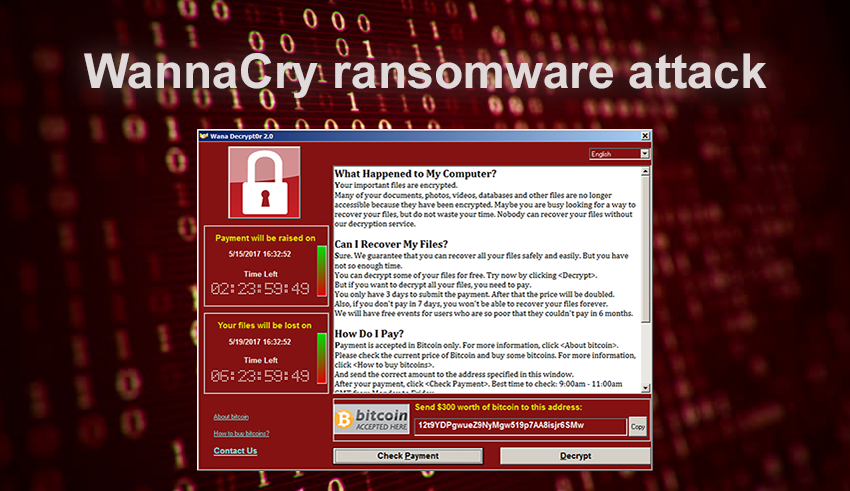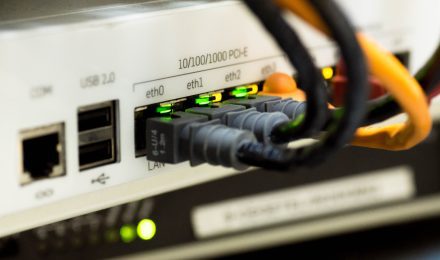
PROTECTING YOUR BUSINESS DATA FROM RANSOMWARE
In our increasingly digital world, data is the lifeblood of every business. This includes customer information, financial records, and intellectual property, all of which are invaluable. However, the escalating threat of ransomware attacks puts businesses of all sizes at risk. In this article, we’ll delve into what ransomware is, why it’s a growing concern, and most importantly, protecting your business data from ransomware attacks.
Understanding Ransomware
Ransomware is a type of malicious software designed to encrypt a victim’s data, making it inaccessible until a ransom is paid to the attacker. These attacks can occur through various vectors, including phishing emails, malicious attachments, or compromised websites. Once a device or network is infected, the ransomware encrypts files and displays a ransom note demanding payment in cryptocurrency, often Bitcoin.
Why Ransomware Is a Growing Concern
Ransomware attacks have seen a sharp increase in recent years, and businesses are a prime target for several reasons:
- Valuable Data: Businesses hold valuable data, making them prime targets for cyber criminals seeking a hefty ransom.
- Financial Gain: Ransomware attacks offer a quick and lucrative payout for cyber criminals.
- Low Risk: Many attackers operate from countries with weak cyber crime laws, making it difficult for law enforcement to apprehend them.
- Ease of Attack: Ransomware is easily accessible on the dark web, enabling even those with minimal technical skills to carry out attacks.
- Global Reach: The internet allows cyber criminals to target businesses globally, increasing their potential profits.
Given these factors, it’s essential for businesses to take proactive steps to protect their data from ransomware threats.
Protecting Your Business Data from Ransomware
In the world of cyber security, it pays to be hypervigilant: assume and plan for the worst, and you’ll always be ready. No matter the size or nature of your business, you must be planning and preparing for a ransomware or cyber security attack now, and on an ongoing basis. Yes, this means you’ll have to undertake the dreaded network security audit if you haven’t already. You’ll need a comprehensive picture of devices, users, processes and controls to start ring-fencing what it is you need to protect.
Cyber security is never a set-it-and-forget-it component of running a business. Instead, it must be an ongoing process that includes frequent conversations with your employees about staying protected from an attack. Make sure you have a plan in place for restoring your systems in the event of an attack. That way, you won’t be giving the criminals any reward or incentive to keep attacking.
-
Employee training and awareness.
Phishing emails are one of the primary entry points for ransomware. Educate your employees on how to identify phishing attempts and establish clear protocols for handling suspicious emails or links. Conduct regular cybersecurity awareness training to ensure your staff stays updated on evolving threats.
-
Monitor Network Traffic
Deploy advanced network monitoring solutions to swiftly identify any aberrant activities, serving as a preemptive measure against potential ransomware threats. Anomalous behaviors detected through these tools can serve as crucial early indicators of an impending attack, enabling timely intervention.
-
Network Segmentation
Partition your network into segments with distinct access levels and security protocols. This strategy restricts the lateral movement of ransomware within your network, thereby mitigating its potential impact.
-
Enable Multi-Factor Authentication (MFA)
MFA enhances security measures by necessitating users to provide multiple forms of verification before accessing accounts or systems. Implement MFA for critical systems and accounts to deter unauthorized access effectively.
-
Deploy a robust antivirus & anti malware software for end point security.
Install reputable antivirus and anti malware software on all network devices. Regularly update these programs to ensure they can detect and prevent the latest threats.
-
Patch and keep systems and software up to date
Ransomware frequently targets vulnerabilities in outdated software and operating systems. Regularly updating all software and systems to patch known vulnerabilities is essential to strengthen your defenses against such attacks.
-
Implement Access Controls
Limit user access to only what is necessary for their roles. Implement the principle of least privilege (POLP) to ensure that employees can only access the files and data required for their job functions. This reduces the potential impact of an attack.
-
Backup Your Data
Regularly backing up your business data and storing backups in a secure, offline location is crucial. This practice ensures that if your data is compromised, you can restore it from a clean backup without resorting to paying a ransom.
-
Develop an Incident Response Plan
Anticipate the potential for a ransomware attack by crafting a thorough incident response plan. This blueprint should delineate the procedures your organization will enact to contain, investigate, and recuperate from an attack. Familiarize all staff members with their respective roles in the event of an incident.
-
Regularly Test Your Security Measures
Regularly undergo security assessments and penetration tests to pinpoint vulnerabilities within your systems and protocols. Swiftly remediate any identified weaknesses to fortify your defenses against ransomware incursions.
What to Do If You’re a Victim of Ransomware
Despite all precautions, no system is entirely immune to ransomware attacks. If your business falls victim to a ransomware attack, here’s what to do:
- Isolate Infected Systems: Swiftly isolate compromised devices from the network to halt the ransomware from spreading further.
- Alert Authorities: Notify law enforcement agencies, including local police and the FBI, about the attack. Collaboration with authorities can aid in tracking down the perpetrators.
- Avoid Ransom Payment: Refrain from paying the ransom as there’s no guarantee of data recovery, and it perpetuates criminal activities.
- Restore from Backup: If backups are available, restore systems from clean copies. Ensure backup data is malware-free before initiating restoration.
- Apply Security Updates: Following recovery, patch vulnerabilities and enhance security protocols to mitigate future attack risks.
- Apply Security Updates: Following recovery, patch vulnerabilities and enhance security protocols to mitigate future attack risks.
THE ICT WEB stands as a prominent figure in the realm of network security. Through our proactive methodology, we aim to shield you from potential threats both today and in the future by Identifying deficiencies in your existing security protocols, Crafting a cyber security strategy adaptable to your company’s growth, Offering continuous support and upkeep for your network’s defense. Our proactive stance enables you to anticipate and thwart cyber attacks before they occur. Feel free to reach out to us today at + (256) 781 353987 or drop us an email at [email protected]. Let’s embark on a journey towards innovation and excellence together!






